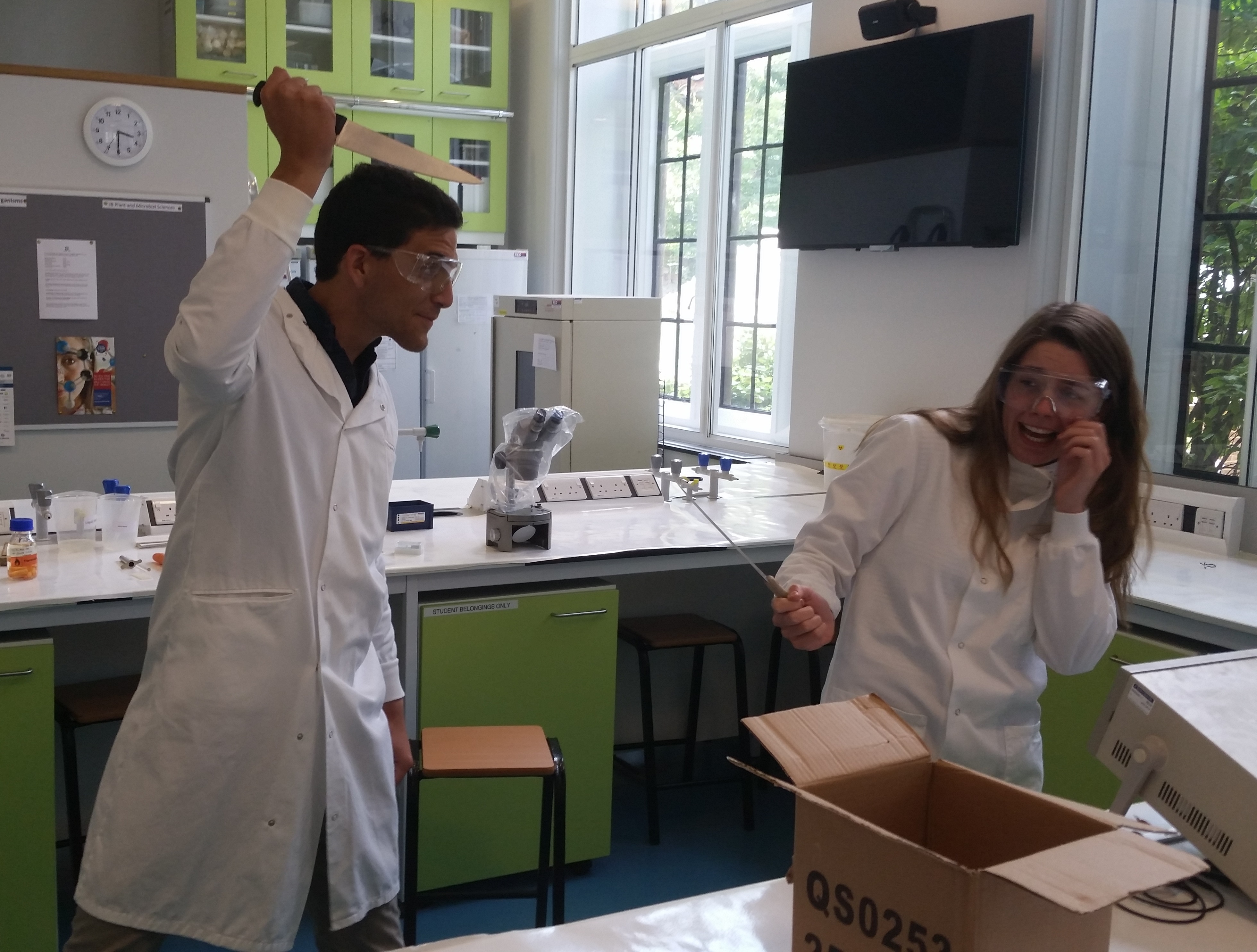Difference between revisions of "Team:Cambridge-JIC/Safety"
KaterinaMN (Talk | contribs) |
|||
| Line 90: | Line 90: | ||
<a class="btn btn-default" href="//2015.igem.org/wiki/images/b/b4/CamJIC-microscopy_workshop_Risk_Assessment.pdf" role="button" style="color:#123a68;border-color:#123a68">Microscopy risk assessment</a> | <a class="btn btn-default" href="//2015.igem.org/wiki/images/b/b4/CamJIC-microscopy_workshop_Risk_Assessment.pdf" role="button" style="color:#123a68;border-color:#123a68">Microscopy risk assessment</a> | ||
<br><br> | <br><br> | ||
| − | <a class="btn btn-default" href="// | + | <a class="btn btn-default" href="https://static.igem.org/mediawiki/2015/d/db/CamJIc-coshh.pdf" role="button" style="color:#123a68;border-color:#123a68">COSHH</a> |
</div></center> | </div></center> | ||
Latest revision as of 01:15, 19 September 2015
Safety

Note: Do not do this at the lab or home
It is vital that any iGEM team not put itself or others at any risk through its work. The Hardware track has fewer associated safety risks than would be found in a purely biological project. In fact, our project involved significantly fewer transformations and much less handling of biological materials than a typical iGEM project. Nevertheless, we considered any possible risks that our project could pose and adopted a number of practices in order to minimise these.
The nature of our project makes it inherently impossible for anyone, even with malicious intentions, to cause harm to others or the environment.
Safety concerns in our Project
Lighting
Some fluorescent molecules require UV light in order to excite them. UV light can be potentially harmful to the eyes and skin if not used with caution. In the project only near-UV LEDs are used, which have a peak in emission at 395nm and are considered safe, as this lies out of the range of 260-270nm [1], which is most harmful to humans. Regardless, all LEDs in the final design of OpenScope are contained within the plastic casing, so the user would not come into contact with any direct light.
Electronics
OpenScope is a digital microscope, and as such is based on a number of electronics: Raspberry Pi, Raspberry Pi camera, Arduino, stepper motors, etc. The Arduino and the Raspberry Pi boards have 5V/2A power supplies, or alternmatively can be plugged into 9V batteries. These components are to be handled as typical home electronic devices. Detailed wiring instructions are available on the Make Your Own page to ensure that any potential users do not misuse the equipment.
Biological
The biological side of our project involves standard, routine transformations with fluorescent proteins. For testing of some of our equipment pre-transformed, GFP-expressing Marchantia polymorpha was provided to us. However, as part of our collaboration with the William and Mary iGEM team, we carried out transformations of E.coli. We did this following the same protocol as them and following standard safety procedures. For more information see our Collaborations Page.
| Organism used |
Biosafety level |
Risk assessment |
|---|---|---|
| Marchantia polymorpha | Level 1 | No individual or community risk |
| Escherichia coli K12 | Level 1 | No individual or community risk |
Glass Cutting
Glass cutting was carried out to adapt the shape of dichroic mirrors to fit within the epicube that we designed for fluorescence microscopy. Precautions were taken to ensure that small fragments of glass do not come into contact with eyes or skin. Glass cutting was carried out on a large tray, preventing stray glass fragments being left around the lab; safety glasses, two pairs of gloves and a lab coat were worn at all times when cutting glass. Risk assessments were completed for the activity and students were supervised by the first-aider on hand. These can be found below (note: signatures were removed from the forms for privacy reasons).
In the final design of the epicube, the mirrors are incorporated into plastic drawers, so the user does not come in direct contact with any pieces of glass.
How secure is our lab?
Our work took place in the Teaching Lab, Department of Plant Sciences, University of Cambridge. The lab is GM certified and biosafety level 1 certified, and so is designed with safety precautions in place for working with genetically modified organisms.
What safety practices have we adopted?
Safety was a high priority when selecting a project to work on. Due to safety concerns several project ideas were discarded during brainstorming. Before carrying out any lab work we were given an extensive safety briefing and lab induction by the departmental safety officer. Standard laboratory procedures were followed at all times. Correct equipment was worn when doing any wet lab work. Cleaning and disposal of equipment was carried out appropriately by considering the hazard level associated. All relevant laws and regulations regarding biosafety were followed.
Outreach day
The team hosted an Outreach day on the 11th of September for secondary school students from Cambridge and the surrounding area. A total of 18 students, supervised by their teachers, were invited to participate in two workshops organised by the team. For more information on the Outreach day, visit our Outreach Page. We completed risk assessments for all activities and supervised the students at all times. These can be found below (note: signatures were removed from the forms for privacy reasons).
References
[1] International program on chemical safety, “Environmental health criteria 160 - Ultraviolet radiation,” World Health Organization 1994, http://www.inchem.org/documents/ehc/ehc/ehc160.htm.
ABOUT US
We are a team of Cambridge undergraduates, competing in the Hardware track in iGEM 2015.
read moreLOCATION
Department of Plant Sciences,
University of Cambridge
Downing Street
CB2 3EA
CONTACT US
Email: igemcambridge2015@gmail.com
Tel: +447721944314









